Rubella vaccine composition. Vaccination for the prevention of rubella in adults and children: vaccination, contraindications, side effects and precautions.
Anna Khrustaleva, Today, 16:14
RUBELLARubella is a child-safe infectious disease. viral disease. Since the susceptibility to the disease is not great, not all children get it. Usually get rubella between the second and ninth year of life, more often in winter and spring.
The disease is transmitted by airborne droplets, less often through infected objects.
The incubation period is 14-21 days.
After a disease, lifelong immunity develops, but its intensity may decrease with age and under the influence of various circumstances. Thus, a childhood rubella disease cannot serve as a 100% guarantee against recurrence.
The most characteristic symptom of the disease is a rash. Occasionally, a runny nose and headache appear in the initial stage. Typically, an increase in the occipital and cervical lymph nodes. The appearance of a rash, first on the face and neck, and then within 24 hours on the trunk, may be accompanied by a slight increase in temperature up to 38-38.5. The rash consists of many bright red spots that usually disappear after 3 days.
Due to the fact that the diagnosis of rubella is difficult (many diseases cause a rash similar to rubella, and rubella is often unrecognized), it is recommended to do a blood test for antibodies in all controversial cases (especially for pregnant women).
Complications
Like any viral disease, it can cause complications in the brain (encephalitis - 1 in 5000 cases, meningitis). These complications are more common in adults.
If the expectant mother gets rubella during the first months of pregnancy, there is a risk of fetal malformations. Exposure to the rubella virus can lead to heart disease, cataracts, deafness, and brain damage. Pregnancy may end in miscarriage or stillbirth.
Arthralgia and arthritis - this complication occurs mainly in adult women.
Vaccination
Vaccination efficiency - 96%
Duration of action - more than 12 years
Side effects
Most children do not have vaccine reactions. Sometimes there may be an increase in body temperature (from 4 to 12 days after vaccination), slight malaise for 1-2 days. Sometimes a short-term (2-3 days) slight increase in the parotid salivary glands. Serious complications are extremely rare. These may include convulsions associated with fever in susceptible children; severe allergic reaction. Extremely rarely, easily occurring aseptic meningitis can develop. Very rare complications include encephalitis and parotitis.
Contraindications
The vaccine is contraindicated in:
immunodeficiency states;
oncological diseases;
allergies to aminoglycosides (kanamycin, monomycin), eggs;
pregnancy.
within 3 months after the introduction of immunoglobulin
pregnancy
List of vaccines
Rudivax
Aventis Pasteur, France
Composition: live attenuated rubella virus (strain Wistar RA 27/3M) - 1000 CPE/1 dose
Contraindications:
pregnancy
acute infectious and progressive diseases;
Adverse reactions:
In children, side effects are extremely rare.
In adults, there may be: a slight increase in lymph nodes; rarely - a rash and fever, starting from the 5th day after vaccination
MMR II
Rubella, measles and mumps vaccine
Merck Sharp & Dohme, USA
Composition: live attenuated viruses, including: standard measles viruses - 1000 TCD50 standard mumps viruses - 20000 TCD50 standard rubella viruses - 1000 TCD50
Contraindications:
pregnancy; if vaccination is carried out at post-pubertal age, pregnancy should be avoided for 3 months. after her
The presence of anaphylactic or anaphylactoid reactions to neomycin, eggs;
Any disease of the respiratory system or any other infection accompanied by fever. Active untreated tuberculosis. Patients receiving immunosuppressive therapy (this contraindication does not apply to patients receiving replacement therapy with corticosteroids). Patients with blood diseases, leukemias, lymphomas of any type, or other malignant tumors that affect the bone marrow or lymphatic system. Primary and acquired immunodeficiency; violation of cellular immunity; hypogammaglobulinemia or dysgammaglobulinemia. The presence of congenital or hereditary immunodeficiencies in the patient's relatives until his sufficient immunocompetence is proven.
Adverse reactions:
Most often, local reactions are possible: a quickly passing burning sensation and / or soreness at the injection site. Less frequently (usually between 5-15 days) there are general reactions: fever and dermatological reactions: rash. RARE General: mild local reactions including erythema, induration and skin sensitivity; pain in the throat, malaise. Digestive system: nausea, vomiting, diarrhea. Blood and lymphatic system: regional lymphadenopathy, thrombocytopenia, purpura. Hypersensitivity: allergic reactions at the injection site; anaphylactic and anaphylactoid reactions, urticaria. Musculoskeletal system: arthralgia and / or arthritis (usually transient, in rare cases chronic - see below), myalgia. Neuropsychiatric: febrile convulsions in children, convulsions without fever, headache, dizziness, paresthesia, polyneuritis, Guillain-Barré syndrome, ataxia. Skin: erythema multiforme. Sense organs: various options optic neuritis, otitis media, deafness associated with nerve damage, conjunctivitis. Genitourinary system: orchitis.
Ervevax
Rubella vaccine
SmithKline Beecham, Belgium
Composition: 1 dose contains at least 1000 TCID50 of a strongly attenuated rubella virus strain RA 27/3 obtained by reproduction in human diploid cells, and no more than 25 μg of neomycin B sulfate.
Contraindications:
pregnancy
severe forms of acute respiratory or other febrile infections;
the estimated incubation period for any infection other than rubella;
hypersensitivity to neomycin
congenital or acquired immunodeficiencies
Adverse reactions:
swollen lymph nodes, rash, fever, transient arthralgia and arthritis, extremely rarely - transient polyneuropathy.
In children, reactions from the joints are usually mild and short-lived; symptoms that limit physical activity are observed in less than 1% of those vaccinated.
Due to the possibility of developing allergic reactions within 30 minutes after vaccination, the patient should be monitored.
Rubella incidence in Russia
During the five months of 2009 in Russian Federation in the group of infections controlled by means of specific prophylaxis, a 7.1-fold decrease in the incidence of rubella and 2-fold decrease in the incidence of mumps was registered.
In the 1970s, only 3-6 percent of women of childbearing age were susceptible to rubella. Now 45-65 percent of girls aged 12-15 have rubella antibodies. That is, when the time comes for these girls to give birth, they will be susceptible to this disease.
In Russia in 1999, 526,000 cases of rubella were registered. At the same time, 20-25 percent of cases occur in people over 15 years old. With this incidence, the expected number of congenital rubella syndrome (CRS) could exceed a thousand per year.
In 2000, 6,391 cases of rubella were recorded in the Krasnoyarsk Territory. In 13 territories of the region, the incidence exceeded the regional indicator by 9 times.
http://www.kid.ru/72003/index9.php3
According to scientific estimates, every fifth woman in Russia (in Moscow - every third) does not have sufficient immunity against rubella. There is a steady increase in the incidence among adults. As a result, in Russia, about 15% (taking into account the lack of widespread and routine diagnostics and the fact that up to 90% of all infections in adults are asymptomatic, this figure may be higher) of all congenital malformations is due to rubella.
http://www.med2000.ru/privivka/krasnuxa2.htm
Anna Khrustaleva, Today, 16:52
Information for pregnant womenThe disease of a pregnant woman leads to infection of the fetus. Depending on the gestational age at which the infection occurs, the fetus develops various malformations with different probability (in the first trimester, the probability reaches 90%, in the second - up to 75%, in the third - 50%). The most characteristic are damage to the organ of vision (cataract, glaucoma, clouding of the cornea), the organ of hearing (deafness), the heart (congenital malformations). Also, congenital rubella syndrome (CRS) includes malformations of the maxillofacial apparatus, the brain (microcephaly, mental retardation), internal organs(jaundice, liver enlargement, myocarditis, etc.). In 15% of cases, rubella leads to miscarriage, stillbirth.
http://www.med2000.ru/privivka/krasnuxa2.htm
With congenital rubella, the virus enters the embryo transplacentally, infects the epithelium of the chorionic villi and the endothelium of the blood vessels of the placenta, which subsequently leads to chronic ischemia of the tissues and organs of the fetus. The virus causes disturbances in the mitotic activity of cells, chromosomal changes leading to the death of the fetus or the formation of severe malformations in the child. The cytodestructive effect of the virus is pronounced in the lens of the eye and the cochlear labyrinth of the inner ear, resulting in cataracts and deafness. The rubella virus primarily affects organs and systems that are in the process of formation, in the so-called critical period of intrauterine development. The critical periods are: for the brain - 3-11th week, eyes and heart - 4-7th, hearing organ - 7-12th. The frequency of congenital malformations depends on the timing of pregnancy: rubella virus infection at 3-4 weeks. pregnancy causes damage to the fetus in 60% of cases, 9-12 weeks - 15%, 13-16 weeks - 7%. In patients with congenital rubella, despite the presence of specific anti-rubella antibodies in the blood, the pathogen may be present in the body long time(2 years or more). This fact confirms the position of congenital rubella as a chronic infection.
In case of contact of a pregnant woman with a patient with rubella, the issue of maintaining pregnancy should be decided taking into account the results of a 2-fold serological examination (with the mandatory determination of the quantitative content of specific immunoglobulins of classes M and G - you can pass, for example, in). If a pregnant woman has a stable titer of specific antibodies, contact should be considered not dangerous.
http://www.medmoon.ru/rebenok/det_bolezni14.html
Vaccinate or get sick?
It is widely believed that it is better for a child to get sick with "childhood" infections on his own in childhood than to be vaccinated. It is illogical on the one hand and harmful on the other.
Because the measles, mumps, and rubella vaccines are live, the vaccine is essentially a small infection caused by live vaccine viruses, specially attenuated to minimize side effects. By choosing a natural infection over a vaccine one, parents expose their child to an unnecessarily greater risk.
Natural measles, in particular, causes encephalitis (inflammation of the brain) with a frequency of up to 1 in 1 thousand cases, and unlike encephalitis as a complication of measles vaccination, they are more severe and with a significantly higher risk of life-long complications up to disability. There are frequent cases of bacterial complications after a massive measles rash, leading to various consequences - from life-threatening to cosmetic (scarring, pigmentation).
It would not be superfluous to mention that mumps, known for its complications on the male reproductive system, is, among other things, the second cause of viral encephalitis after measles. And although rubella encephalitis is much more rare, one should not forget that rubella, measles, and mumps pose a threat not only to the child himself, but also to his parents, who, firstly, with a 30% probability do not have the appropriate immunity, and secondly, they will suffer these infections much harder than their children.
There is also an opinion that in order to minimize adverse reactions, vaccinations against measles-mumps and rubella should be done separately. The fallacy of this approach lies in the fact that with separate vaccinations, the child and the parents themselves are subjected to 3-fold stress, ballast substances are introduced into the child's body 3-fold, the immune system"set in motion" 3 times instead of once. Thus, a single vaccination with a combined vaccine is a safer and more convenient solution in all respects. By the way, in developed countries, combined vaccines have long almost completely replaced separate ones, with the exception of situations when a person has had some of the infections that the combined vaccine protects against.
In Russia, two combined vaccines are most widely used - the Belgian "Priorix" and the American-Dutch MMR-II (2). In Ukraine and some other CIS countries, the French Trimovax vaccine is available. All three drugs are the best examples this class vaccines proven over decades of use around the world.
Publication date 13.08.2009
Article author: Anna Khrustaleva
(German measles) is an infectious disease that is not dangerous for children, the sensitivity to which depends on genetic factors, ethnic composition and general immunity. In the regions of Russia, sensitivity to this virus is increased, therefore, routine immunization and rubella vaccination are carried out immediately after birth, before pregnancy or after it. The disease is manifested by mild symptoms that do not pose a danger to young children and adults.
Rubella in children The single most important risk is congenital rubella syndrome (CRS), which can affect a child's physical and mental health. CRS causes mental retardation, underdevelopment of the NS and the brain, deformities, hearing and vision impairment. The syndrome is diagnosed in newborns when a pregnant woman suffers rubella in the early stages of carrying the fetus - up to 12 weeks. There are cases of the birth of children with CRS, when the infection has joined and after the 20th week of bearing the fetus. In this regard, a decision was made to vaccinate pregnant women and the entire adult population.
Newborns with a congenital disease shed the virus during external environment during the first year of life, an infected person remains infectious for 14 days after the disease and another 21 days after the onset of the first clinical symptoms of the pathology. Rubella vaccination in adults makes the body resistant to the virus, and for the first time, vaccinations were only given to girls in their teens and women of childbearing age, which ruled out congenital diseases.
Grafting rules
Today, rubella vaccination is carried out not only for children and women, the strategy involves the exclusion of the circulation of the virus among the adult population after 20 and 30 years. This makes it possible to exclude severe cases and epidemics by active immunization.
Rubella vaccination is carried out:
- children at 12 months;
- children at the age of 14;
- adults up to 40 years old.
The introduction of the vaccine to children under one year of age and adults of childbearing age allows you to eliminate the virus within 20 years from birth and 10 after revaccination.
One-component or MMR vaccine?
Vaccination simultaneously with three components is highly effective and can prevent the development of three dangerous infections at the same time - rubella, mumps, measles. A person needs a rubella vaccine only once to develop immunity, in the case of mumps, two injections are needed, therefore the MMR vaccine is administered twice. This scheme allows you to prolong and enhance the effect of the vaccine. WHO recommends immunization with a triple vaccine.
MMR, unlike single-component vaccines, has few reactions, which is associated with the simultaneous use of several components. As for the rubella vaccine, it works on people in varying degrees. Vaccination of children under one year of age can protect against the virus for at least 10 years for one child, other children remain protected for life.
Immunization of children
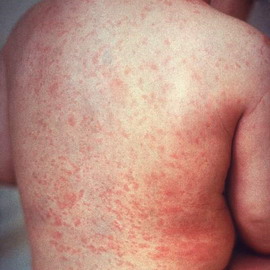 Vaccination of children against rubella is obligatory The national vaccination schedule suggests vaccination of children at the age of 1 and a second time at 6 years of age. At the age of 6 years, children are vaccinated against measles, rubella and mumps, which is caused by the need to protect against three viruses. In case of insufficient formation of immunity during vaccination at 1 year, re-vaccination allows you to protect the child and make the body immune to three viral infections at the same time. The need for re-vaccination is due to the fact that only 96% of children receive immunity after the first vaccination, and this is a high risk in epidemiological regions.
Vaccination of children against rubella is obligatory The national vaccination schedule suggests vaccination of children at the age of 1 and a second time at 6 years of age. At the age of 6 years, children are vaccinated against measles, rubella and mumps, which is caused by the need to protect against three viruses. In case of insufficient formation of immunity during vaccination at 1 year, re-vaccination allows you to protect the child and make the body immune to three viral infections at the same time. The need for re-vaccination is due to the fact that only 96% of children receive immunity after the first vaccination, and this is a high risk in epidemiological regions.
Young children tolerate the vaccine normally, side effects are recorded extremely rarely, after the introduction of the vaccine, a small local reaction is possible in the form of thickening of the skin, fever, slight rash, swollen lymph nodes. The situation becomes more complicated when the child has an allergic reaction.
Immunization at an early age not only reduces the incidence of childhood illnesses, but also reduces the circulation of the virus in certain regions. It is especially important to protect women of childbearing age, which significantly reduces the incidence of congenital rubella syndrome.
Vaccination and pregnancy
An effective option to protect the unborn child from infection is the rubella vaccination during the planning period of pregnancy, optimum time the vaccine is considered a month before the intended conception. WHO does not recommend vaccinating women while carrying a fetus, as there is a high risk of the virus to the fetus. When a pregnant woman is vaccinated with early term the risk is reduced and abortion is not indicated.
Observations since 1960 have not shown a single case of the appearance of congenital rubella syndrome in a child in the case of vaccination of a woman at an early stage of gestation.
Side effects
The reaction to the vaccine determines the side effects and Negative consequences vaccinations. The reaction is a complex of adverse signs that are not normal after vaccination. Undesirable actions can be local or general.
Local reaction to the rubella vaccine:
- compaction at the injection site;
- redness and irritation of the skin;
- soreness.
Common symptoms of side effects:
- increase in body temperature;
- compaction and soreness of the lymph nodes;
- general weakness, sweating.
Allocate weak and severe reactions to vaccination. Severe consequences include severe pain during the administration of the vaccine and after the injection, an increase in temperature to 40 degrees, and, importantly, the reaction does not occur immediately, but only 7-16 days after vaccination.
The most frequent side effect there is a general malaise and high fever, which is aggravated by the use of alcohol after vaccination or vaccination during infection.
In some cases, there is an increase in the salivary glands, fever, mild aseptic meningitis. Rare and dangerous side effects include parotitis and encephalitis. Rash, arthralgia, and arthritis are rare, but the risk increases in women over 30 years of age. The risk of consequences increases if the rules of vaccination are not followed, if alcohol is consumed, the erroneous administration of another drug, and non-compliance with asepsis rules. In children, the risk of developing adverse reactions is minimal.
Contraindications
There are absolute and relative contraindications.
- Rubella vaccination is not carried out in case of immunodeficiency, malignant diseases, with a complication of the first vaccination, allergic reactions.
- Vaccination is temporarily postponed in case of acute inflammatory, infectious diseases in the body, during immunosuppressive treatment, during pregnancy, with exacerbation of chronic pathologies.
Rubella vaccination is carried out 14 days after recovery, in case of severe manifestations of the disease - after 6 weeks. In chronic diseases, vaccination is carried out during the period of complete remission 14-21 days after the exacerbation. Vaccination of people at risk after contact with a sick person does not protect against the disease. In such cases, an immunological study is performed and, if an infection is detected, immunoglobulins are used.
If there are no contraindications to rubella vaccination, vaccination is the only possible way prevent the spread of this dangerous disease. But even after immunization, there is no 100% guarantee that re-infection will not occur. This disease can affect children, adolescents, and adults; rubella is especially dangerous for expectant mothers during pregnancy, since the infection can be transmitted to the fetus.
Rubella transmission routes and first signs (with photo)
Rubella is a disease that cripples unborn children.
Rubella in children and adults (outdated - German measles, measles rubella) is an acutely contagious viral disease.
As you can see in the photo, a sign of rubella is a rapidly spreading skin rash:
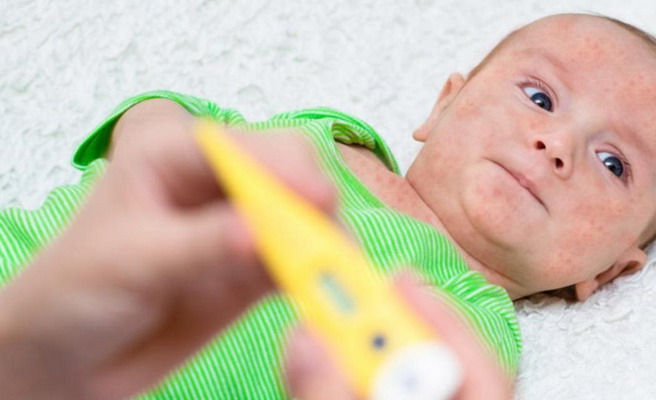
Also, the disease is accompanied by an increase in lymph nodes (especially the occipital), usually a slight increase in body temperature. In children, up to 90% of cases of the disease occur without visible symptoms. The infection has an autumn-spring seasonality.
The main route of transmission of rubella is airborne. The incubation period is 1-2 weeks, a sick person is contagious 7 days before the rash appears and until the 7-10th day after the rash.
The main symptom of rubella in children and adults is the appearance of a rash, first on the skin of the face, with consistent coverage of the entire body. Swelling of the occipital lymph nodes is typical. The first signs of rubella may be accompanied by symptoms of acute respiratory illness. In general, the disease in children is mild, complications are rare. The most formidable complication is rubella (like measles) encephalitis (inflammation of the brain), its frequency is 1:5000-1:6000 cases.
In adolescents and adults, rubella is much more severe. Fever, intoxication phenomena (malaise, fatigue) are more pronounced, eye lesions (conjunctivitis) are noted.
Here are photos of how rubella manifests itself in children and adults:


Characteristic for adults (with a greater frequency in women) is the defeat of small (phalangeal, metacarpophalangeal) and, less often, large (knee, elbow) joints.
In one of the epidemics, there were frequent complaints of pain in the testicles.
Most patients do not require special treatment. Means are used to treat symptoms and complications, facilitating the general condition. After a disease, lifelong immunity develops, but its intensity may decrease with age and under the influence of various circumstances.
Thus, childhood rubella disease cannot serve as a 100% guarantee against recurrence.
The disease of a pregnant woman leads to infection of the fetus. Depending on the gestational age at which infection occurs, the fetus with a different probability (in the first trimester, the probability reaches 90%, in the second - up to 75%, in the third - 50%), multiple malformations are formed.
The most characteristic are lesions of the organ of vision (cataract, glaucoma, clouding of the cornea), the organ of hearing (deafness), the heart (congenital malformations). Also, congenital rubella syndrome (CRS) includes defects in the formation of the bones of the skull, brain (small brain size, mental retardation), internal organs (jaundice, liver enlargement, myocarditis, etc.) and bones (areas of rarefaction of bone tissue of long tubular bones).
In 15% of cases, rubella in pregnant women leads to miscarriage, stillbirth. When rubella is detected, artificial termination of pregnancy is often carried out.
See photos of rubella symptoms during pregnancy:
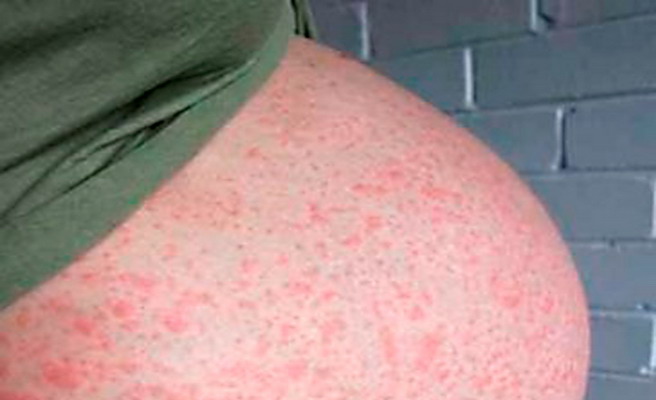
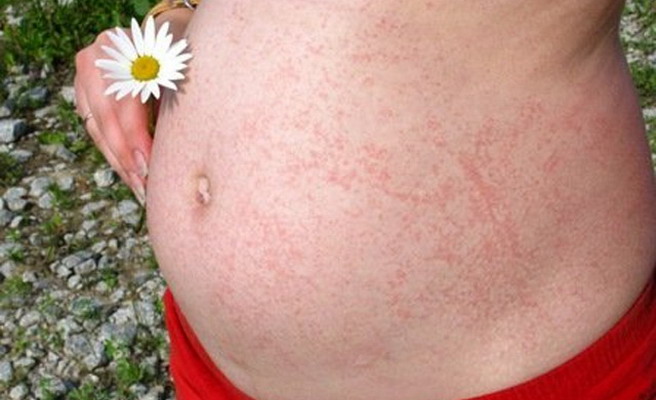
During the last rubella epidemic in the United States, recorded in the 60s. 20th century (followed by routine rubella vaccination of children in 1968), there were 12.5 million cases of rubella and 20,000 cases of CRS.
More than 11,000 children with CRS were reported deaf, 3,850 lost their sight, and more than 1,800 children had intellectual disabilities.
According to WHO estimates, in Russia every fifth woman (in Moscow - every third) does not have sufficient immunity against rubella. There is a steady increase in the incidence among adults.
As a result, in Russia, about 15% (taking into account the lack of widespread and routine diagnostics and the fact that up to 90% of all infections in adults are asymptomatic, this figure may be higher) of all congenital malformations is due to rubella.
In practice, the frequency of detection of CRS in the regions of Russia is 2-5 per 1000 live births.
According to WHO estimates, rubella cripples about 300 thousand children annually on the planet.
Laboratory diagnosis of rubella in children and adults
Laboratory diagnosis of rubella is based on the identification of characteristic symptoms (rash, enlargement of the occipital lymph nodes) and laboratory detection of antibodies to the rubella virus.
 In acute infection, IgM antibodies are of diagnostic value, they are detected from the first days of infection, disappear 1.5 months after its onset and do not appear upon contact with the virus in an already immune person.
In acute infection, IgM antibodies are of diagnostic value, they are detected from the first days of infection, disappear 1.5 months after its onset and do not appear upon contact with the virus in an already immune person.
In controversial cases, 2 samples are taken with an interval of 10-15 days, and if in the second sample the increase in IgM concentration is more than 30%, the final diagnosis of the primary infection is made.
The presence of IgG antibodies in the blood may either indicate the presence of immunity due to long-term contact with the virus, or confirm the fact of an acute infection at relatively late stages (starting from the 2nd week from the onset of the disease).
Determination of the concentration of IgG antibodies also helps to decide on the need for vaccination. The amount of IgG is defined as an index, the values of which are less than 1 are interpreted as the absence of immunity.
Rubella vaccinations and revaccinations: strategy and timing
There are three principal approaches to eradicating rubella and CRS - vaccinating children, vaccinating adolescent girls, and vaccinating women of childbearing age who plan to have children.
The first strategy is effective against rubella itself, but does not completely solve the problem of CRS (it will take 20-30 years), because vaccination has been shown to protect for about 20 years, which means that it can theoretically shift the incidence of rubella to childbearing years. age.
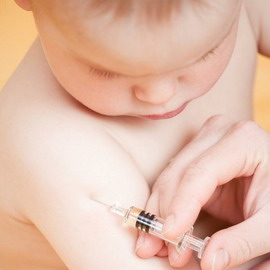 The second strategy, vaccination of adolescent girls at 11-14 years of age, is effective in eradicating CRS (although it will take 10-20 years to achieve this goal), but does not solve the problem of rubella in general (in Russia, the peak occurs at the age of 7-14 years). ).
The second strategy, vaccination of adolescent girls at 11-14 years of age, is effective in eradicating CRS (although it will take 10-20 years to achieve this goal), but does not solve the problem of rubella in general (in Russia, the peak occurs at the age of 7-14 years). ).
Rubella vaccination of adult women is extremely effective in controlling CRS (although achieving 100% coverage in the adult population is almost impossible), but also does not solve the problem of rubella itself.
In view of these considerations, WHO recommends a combination of all three vaccination and rubella booster strategies whenever possible. An example of this combination is the United States, where, in addition to vaccinating children, vaccination is provided in colleges and the military. In Russia, in some regions, vaccination of children and adolescents is combined.
An interesting way out of the problem of rubella vaccination of women of childbearing age was found in France - the refusal to register a marriage in the absence of a rubella vaccination mark or a record of the infection.
According to the Russian vaccination calendar, the terms of vaccination against rubella are as follows: the first immunization against this disease is carried out at 12 months, the second - at 6-7 years.
Healthy children should not be vaccinated before 9 months of age as most women are rubella immune. Therefore, the vaccine can simply be neutralized by antibodies received by the child from the mother.
Re-vaccination at the age of 6 is due to the same reasons - the possibility of retaining maternal antibodies to the rubella virus in some children at the time of the first vaccination.
Regardless of which vaccine is used to prevent rubella, vaccinations are especially recommended for rubella-free girls aged 11-14 years and women of childbearing age who are planning a pregnancy (but no later than 3 months before the planned pregnancy).
Names of vaccines used to prevent rubella
The names of the rubella vaccines used worldwide to prevent the disease are listed below:
- Rudivax (Sanofi Pasteur, France) is a vaccine with a maximum efficiency of up to 100%. The duration of the formed immunity is more than 20 years, and there is reason to believe that this immunity can be lifelong. The experience of using the Rudivax vaccine is truly enormous - it has been used all over the world since 1968, and to date, about 200 million vaccinations have been made with the vaccine (in the form of a separate vaccine and as part of combined vaccines), of which more than 2.5 million are in Russia;
- rubella vaccine (Serum Institute of India, India);
- rubella vaccine (Institute of Immunology, Inc. Croatia);
- Erevax (produced in Belgium). Erevax is a one-component rubella vaccine - a live attenuated vaccine from a culture of rubella virus strain Wistar LI27/3M grown on diploid human cells. Forms specific immunity to the rubella virus, which develops within 15 days after vaccination and persists for at least 16 years. Rubella vaccination with this drug has also proven itself in children over 1 year of age, in prepubertal girls (11-13 years old), and in women of reproductive age.
Reactions after vaccination against rubella and contraindications for children and adults
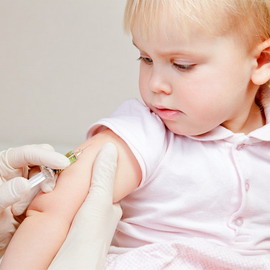 The overall frequency of adverse reactions to rubella vaccination, according to the use of the Rudivax vaccine in Russia, does not exceed 5%. Of the general reactions, an increase in body temperature up to 38 ° C, a moderate increase in the occipital and other lymph nodes can be noted.
The overall frequency of adverse reactions to rubella vaccination, according to the use of the Rudivax vaccine in Russia, does not exceed 5%. Of the general reactions, an increase in body temperature up to 38 ° C, a moderate increase in the occipital and other lymph nodes can be noted.
Of the local reactions after rubella vaccination, a small number of vaccinated patients experience slight soreness, swelling at the injection site. All of these reactions are not severe and disappear on their own within 24-48 hours.
We must not forget that there are a number of contraindications to rubella vaccination in children and adults, as well as situations in which the vaccine is prescribed with caution.
Absolute contraindications for rubella vaccination in children and adults are:
- allergies to neomycin (this antibiotic is found in trace amounts in the vaccine and protects it from bacterial contamination);
- pregnancy (vaccination should be carried out no later than 3 months before the start of the intended pregnancy). The fact of accidental vaccination during pregnancy, unlike rubella itself, is not an indication for its interruption.
Vaccination is not required in case of documented rubella disease, however, unconfirmed cases of rubella and contact with a sick person are not a contraindication to vaccination.
In doubtful cases, an analysis can be carried out to detect specific antibodies, but this is not a prerequisite for vaccination.
One study showed that it was safe to vaccinate patients who were immune to rubella at the time of vaccination (those with strong immunity had the vaccine virus neutralized by existing antibodies).
Moreover, in cases where the concentration of antibodies was low, vaccination improved immunity. In view of this, universal testing for antibodies to rubella before vaccination is not recommended (in particular by WHO) as it does not make sense at a rather significant cost.
Rubella is infectious disease which mainly affects children. Rubella in children is relatively mild compared to rubella in adults. If a woman becomes infected with rubella at the beginning of pregnancy, then the disease can provoke serious birth defects in the unborn baby. Therefore, it is so important to know the features of prevention, because once a vaccine has been given, it does not guarantee the development of stable immunity.
Is a rubella vaccine necessary?
Rubella is an airborne viral infection that causes serious complications. The most effective measure of protection against infection is specific prevention - vaccination. If the drug is administered according to the vaccination calendar, then a person develops strong immunity.
For a long time, rubella was known as German measles.
Rubella vaccination is carried out in accordance with the calendar of mandatory preventive vaccinations.
The debate over whether rubella prophylaxis is necessary for adults continues to this day. Some believe that only teenage girls and women who are planning a pregnancy need to be vaccinated. The infection is especially dangerous during pregnancy, and it is not so much the woman herself who suffers from it, but the fetus. The disease can cause serious abnormalities in the development of the fetus or provoke a miscarriage.
Rubella is a childhood infection and adults rarely get it, but they can become a carrier of the virus, which is no less dangerous. Here's why you need to get vaccinated:
- employees of preschool or school educational institutions;
- all family members of a woman who is planning a pregnancy.
In addition, due to compulsory vaccination, the disease can be completely defeated, as is the case with smallpox.
Video about the disease
Specific disease prevention
Two types of vaccines are used for vaccination:
- Combined. These vaccines contain several types of attenuated viruses (eg measles, rubella and mumps). They are the most preferred. The combination vaccine is usually given to children or women who are planning a pregnancy. A common option is the imported drug Priorix.
- One-component. They contain only the rubella virus. They are mainly administered to adults.
Vaccines contain weakened live viruses. To weaken them, special chemical substances. Viruses, once in the body, cause erased symptoms of the disease. At the same time, they contribute to the formation of protective antibodies, and if a person subsequently becomes naturally infected with this infection, then due to the action of antibodies, the disease will not be able to develop.
Vaccination of children
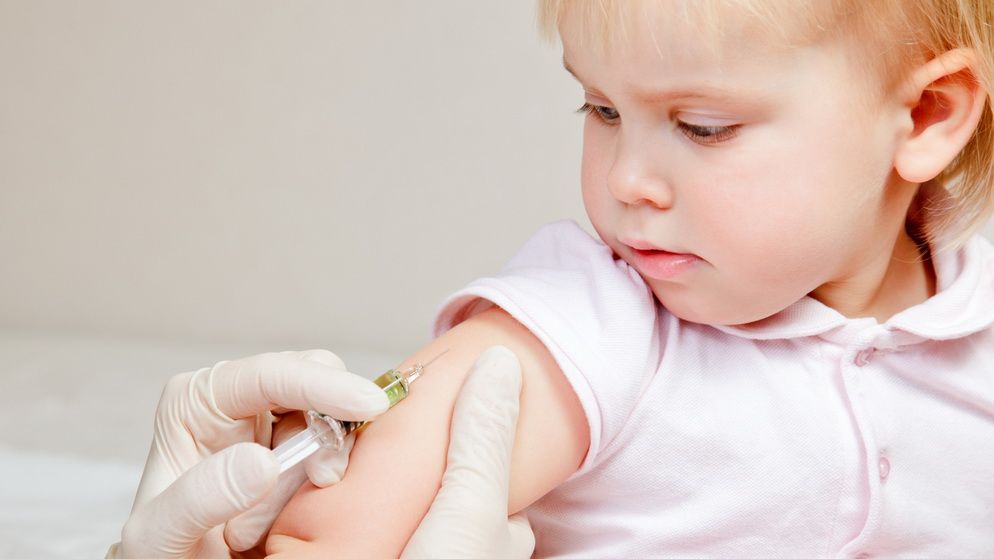
AT childhood a combination vaccine is used for vaccination
According to the preventive vaccination calendar, MMR vaccination (short for measles-mumps-rubella) is carried out in a year and a half. The drug is injected into the baby's thigh. The child is revaccinated at 6 years of age. At this age, the vaccine is given in the upper arm.
If the child has not been vaccinated within the indicated periods, then the procedure must be carried out as soon as possible. True, vaccination can also be carried out by a teenager at the age of 13-17, but you should not postpone this. After all, the child gradually expands his social circle, thereby increasing the risk of infection with the wild form of the virus.
Almost 2-5% of people do not develop immunity against rubella after the first vaccination. In this case, revaccination is carried out.
If the child is healthy, then there is no need for preliminary preparation. To prevent unwanted reactions, you must adhere to the following principles:
- If the child is prone to allergies, then he should take antiallergic drugs a few days before vaccination.
- If the child is often sick, then prevent infection or exacerbation chronic diseases(sinusitis, adenoiditis) will help to take general tonic a week before vaccination.
- It is recommended to go for the vaccination half-starved.
- If the patient is taking vitamin D, then the course of vitamin therapy should be suspended and resumed only 5 days after vaccination.
Vaccination should be carried out only if the child is healthy. If he has acute or chronic pathologies in the acute stage, then the vaccine should be given against the background of complete remission.
For healthy person the child after vaccination does not pose a danger. But it can be contagious for immunocompromised people. The risk group includes:
- pregnant women;
- cancer patients;
- people with severe chronic diseases;
- HIV patients.
The immune system of each person reacts differently to the rubella virus. For some, lifelong immunity develops after vaccination, while for others it lasts only 5 years. According to the recommendations of the World Health Organization, revaccination should be carried out every ten years. To make sure that there are rubella antibodies in the human body, you can take a blood test.
Vaccination for adults
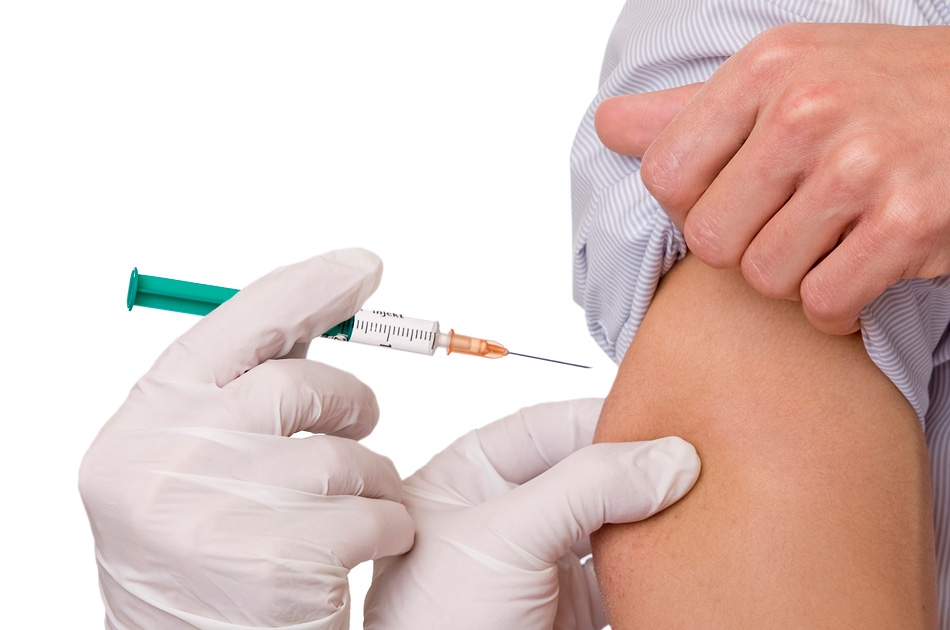
The effectiveness of vaccination in adults is about 90%
After vaccination against rubella, complications in adults are practically not observed. Meanwhile, the disease itself can cause very serious pathologies, such as damage to the pancreas, meningitis, and many others.
All adults who were not vaccinated as children should be vaccinated. An injection is made in the shoulder.
If a woman is planning a pregnancy, then the best option will take a blood test for the presence of antibodies. If not, then she should be vaccinated a month before fertilization. Since rubella is a potential hazard to the fetus, the WHO does not recommend vaccinating a pregnant woman. But if a woman was vaccinated already during pregnancy, then this is not an indication for early termination.
Contraindications
Contraindications for vaccination may be temporary or permanent.
Temporary and permanent contraindications - table
Side effects
Side effects after vaccination are observed in 5-20% of patients. They can be local (at the injection site) and general (reflect the reaction of the whole organism). Symptoms begin to appear 5–15 days after vaccination. The patient may have a slight rise in temperature, parotid, mandibular and cervical lymph nodes may increase. As local reactions to vaccination, it is worth noting:
- burning and pain at the injection site;
- elevated body temperature;
- swelling or redness;
- the appearance of a rash.
A rash after vaccination can be observed throughout the skin or affect individual parts of it. It goes away in a week and does not need to be treated.
It should be remembered that the temperature may appear only 5-15 days after vaccination. If it is observed at other times, then this has nothing to do with vaccination.
Common reactions to the measles vaccine:
- sore throat;
- allergic rashes;
- snot;
- general weakness;
- cough;
- nausea;
- diarrhea;
- muscle and headache.
The older the patient, the more likely they are to develop arthritis after immunization. It affects mostly adult women, while it is rare in the male part of the population. As a rule, the joints of the hand are affected after vaccination. Inflammation can last for a long time, but, as a rule, goes away on its own, without treatment.
Reactions in children after vaccination - video by Dr. Komarovsky
Rules of conduct after immunization
After the patient has been vaccinated against rubella, the following recommendations should be followed:
- Do not immediately leave the clinic. It is better to walk nearby for half an hour, so that at the first manifestations of an allergic reaction to the vaccine, seek medical help.
- You need to eat in moderation, without overeating. Food should not be fatty, high-calorie. Young children do not need to be given new foods for several days, as they can cause allergies.
- Contact with patients with acute respiratory viral infections should be avoided - at least for 14 days after the introduction of the vaccine. If the child attends educational institution, then it is better for him to stay at home for two or three days, so as not to catch a new infection in the children's team.
- Do not overcool or overheat.
- The injection site must be dry. In the first two days after vaccination, avoid water procedures. After that, you can swim, but the injection site does not need to be rubbed with a washcloth, and also lubricated with a gel or cream without the recommendation of doctors.
- If the temperature has not risen, then the next day you can already walk. At the same time, clothing should be comfortable so that a person does not sweat or freeze.
- You need to drink as much liquid as possible. It can be tea, an infusion of herbs, such as chamomile, or plain water. It is better to refuse juices, as they can cause an allergic reaction.
- Adults are advised to refrain from using alcoholic beverages within 3–5 days. After all, alcohol can become an obstacle to the normal formation of immunity.
So do you need to get vaccinated against rubella? Most of all, this question torments young parents who want their child to grow up strong and healthy. Any doctor will confirm that vaccinations are not only necessary, but also necessary. That's just what you need to instill healthy child, in order to exclude possible complications. In addition, it is much easier to prevent a disease than to deal with it later.
The rubella vaccine is included in the list of mandatory vaccines administered to children at a young age and throughout life. Although the disease itself does not bring great harm to a person and is easily tolerated, doctors were forced to take such measures because of the need to protect a pregnant woman from accidental contact with a sick person.
Why rubella is dangerous
The rubella virus spreads only in the human environment. Therefore, only people infect each other. Immunity to rubella may be absent not only in children over the age of one year, but also in other age categories. Even having had rubella in its direct form, and not as a result of vaccination, a person may not become resistant to the virus and get sick again. This category includes about 5% of the population. The rest is well vaccinated. The rubella vaccine achieves the desired effect to resist the disease at any age.
If society refuses mass vaccination against rubella, this will not be a danger to a small child, an elderly person, men or women who do not think about procreation. Harm from contact with the virus or its carrier will only be pregnant girls or women from 18 to 40 years old. Perhaps later, when the desire to give birth arises after forty years.
Rubella adversely affects the development of pregnancy. There are no threats to the mother herself, but different consequences threaten the embryo. What happens when you get rubella during pregnancy depends on the timing. The period of the first 12 weeks is considered the most dangerous, when the basic parameters of the baby are laid. During this period, any health problems are undesirable, and not just contact with rubella. The virus provokes fetal rejection, miscarriage.
If rubella struck a pregnant woman after 20 weeks, events can develop in two ways:
- bearing and giving birth to a full-fledged baby;
- development of pathologies caused by rubella.
The first option is possible when receiving the right treatment. It is possible that a newborn will have congenital rubella, which remains in the child's body until the age of one and carries a risk to others.
In the second case, pathologies of various kinds are possible:
- heart problems;
- inhibited development of brain activity;
- deviations in the formation of the nervous system;
- hearing or vision damage.
Some newborns die of complications after a short period of time.
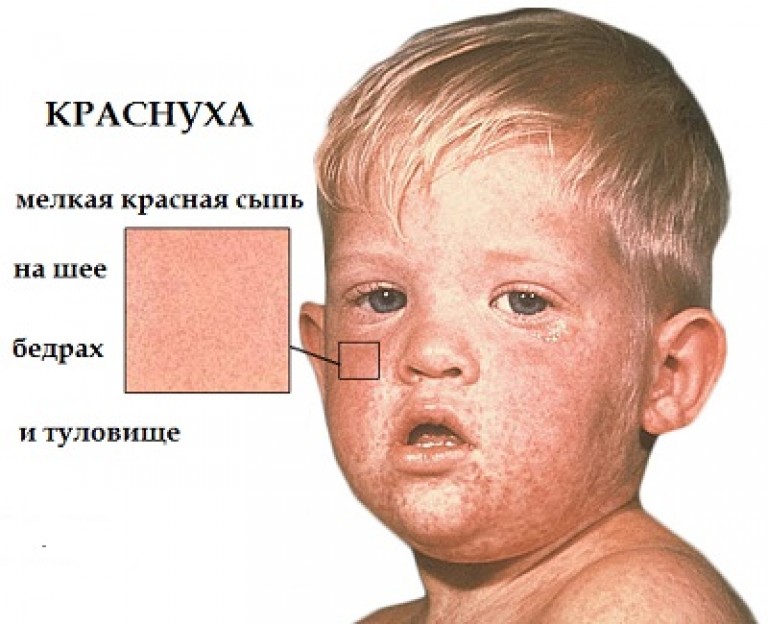
Rubella vaccination periods
To avoid intrauterine deformities and pathologies, it was decided to exclude the very source of danger for the pregnant woman and her fetus. It is impossible to isolate a girl or a woman for the entire duration of pregnancy in order to exclude the possibility of infection.
The rubella vaccine has a time interval, which is also non-random. It has been observed that the stability of immunity is maintained in all people in different ways:
- Doesn't work for some at all.
- For some, it weakens after 4-5 years.
- Someone retains antibodies for 10–20 years.
Testing each person for the presence of antibodies is laborious and expensive. Therefore, the intervals for repeated administration of rubella serum are accepted:
- at the age of one year (from 12 to 15 months);
- in the kindergarten (6–7 years);
- adolescence (from 14 to 18 years);
- adult period (free up to 25 years, optionally every 10 years after the last vaccination).
The rubella vaccine is not given to older adults. They are not considered a risk group. Although, living in the same family with children and grandchildren, grandparents may be at risk of infection, they will become carriers of the infection for others.
The question of whether to vaccinate yourself or your baby depends on the individual's personal beliefs. AT last years the trend of refusal of vaccinations in children is increasing, which raises fears for the development of the rubella virus on an epidemic scale. Mom believes that it is not worth poisoning children with various drugs, specifically infecting with diseases that are considered children's and may not touch the baby at all.
Of course, the baby can avoid direct contact, but when he gets sick, he becomes dangerous for a pregnant woman or her relatives. The standard situation when children communicate in kindergarten and transmit viruses to each other. Rubella does not have a rapid onset. Symptoms appear only after a few days or weeks.
In one of the children, the mother is in a position and takes care of the firstborn as it should be. Coming from the kindergarten, the baby brings rubella home, but the mother does not even know about the presence of the disease. Germs are released into the air through saliva, urine, etc. If the mother does not have stable immunity and she was not vaccinated against rubella before pregnancy, complications may arise. A childhood illness will cause completely non-childish problems.
To eliminate such situations, a rubella vaccine was developed. It must be done at the time appointed by the doctor or on your own.
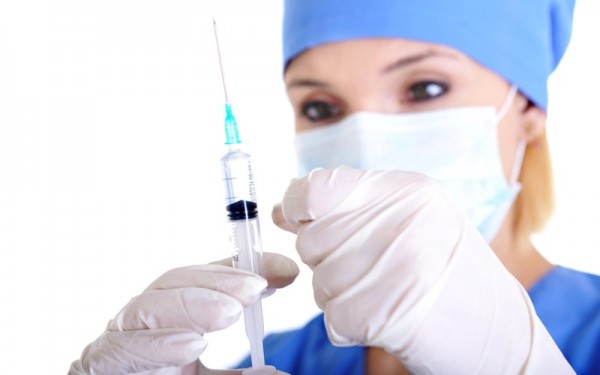
Place for injection
Where is the rubella vaccine given? It depends on the age of the person:
- Up to a year and after, it is customary to administer the vaccine only in the baby's thigh to ensure maximum benefit from vaccination. This place does not contain thick skin and fat in children, which slow down the process of resorption and absorption of the drug. If the doctor offers to vaccinate the buttocks, then do not agree. It can harm the baby if the needle hits a bone or sciatic nerve. Instruction for medical personnel strictly regulates where to introduce serum for young children.
- The second dose for children aged 6 to 7 is given in the upper arm, just below the shoulder, to ensure a good result. It is not advisable to do it in the leg at this age because of the pain that can interfere with the movement of the child.
- For adults, the rubella vaccine is given in the arm or under the shoulder blade, which also causes slight discomfort.
Number of rubella shots
How many rubella vaccines do you need to make sure that antibodies are produced? it idiosyncrasy person. Traditionally, vaccination is done three times before the onset of adulthood. How much rubella vaccine to give in the adult period depends on the desire of the patient and the urgent need for vaccination.
It is mandatory to vaccinate against rubella for young people and girls under 25 years of age. This period was chosen because of the possibility of pregnancy. Often, young people tend to start a family after 20 years. The term of marriage may give a reason to vaccinate against rubella for a guy and a girl, because the period of preservation of antibodies in the body may expire. But you can do a preliminary blood test to identify the content or lack of resistance to the virus. If the immunization period has not expired, then you should not get vaccinated.
Subsequent rubella vaccinations depend on whether they are needed. Because after the age of 25, the voluntary vaccination of adults for a fee comes. If you wish, you can contact the clinic. There is an opportunity to get vaccinated only against rubella.
Many people get a sustained response for life in the first doses. They no longer have the question of how many vaccinations to do if the analysis confirms the presence of their immunity.
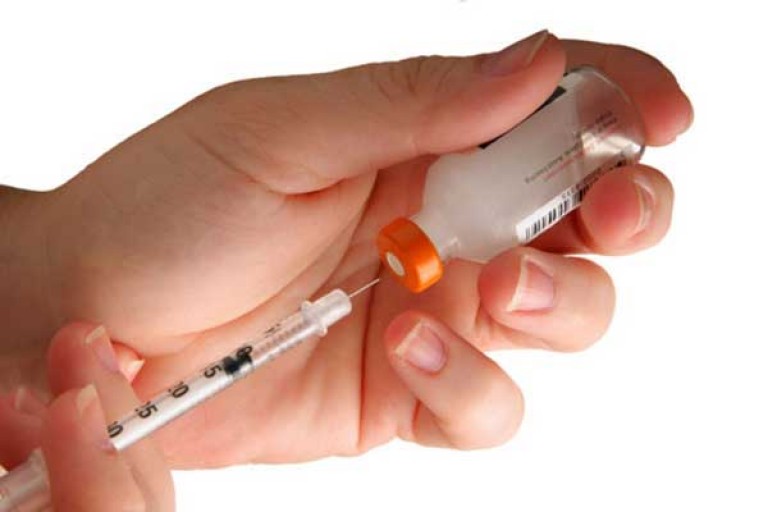
Consequences of vaccination
In Russia, rubella vaccination is combined with other vaccinations. Measles and mumps are usually given at the same time. Sometimes two injections are used in order to deliver the rubella vaccine and separately measles and mumps serum. The instruction for the nurse in this case provides for injections in different legs or hands. Two vaccinations should not meet each other.
A three-component vaccine is easier to tolerate when children are given rubella, measles, and mumps at a time. The reaction to vaccination against rubella, measles and mumps will not differ from a single-component formulation. Psychologically, it is easier for children when they are not constantly dragged to the vaccination room.
The effects of rubella vaccination on children and adults can be different. Adults will not even feel the difference in well-being, and children may have the following manifestations:
- fever, sometimes up to 40 degrees;
- cough, runny nose;
- swollen lymph nodes in the neck, ears, throat;
- vomiting, diarrhea (single manifestation);
- headache, dizziness;
- sore throat;
- rash in certain parts of the body.
These reactions are confirmation that the body has begun work on the production of antibodies. No special measures should be taken. You can only lower the temperature if there is an overheating of the body above 38.5.
The reaction to the vaccine does not appear immediately, but after a few days. The period is from 5 to 15 days. It is necessary to observe the general condition of the children for two weeks. If other symptoms appear, it may not be related to the vaccination. It is possible that when you visited the clinic, you encountered another virus that became attached due to a weakened immune system.





